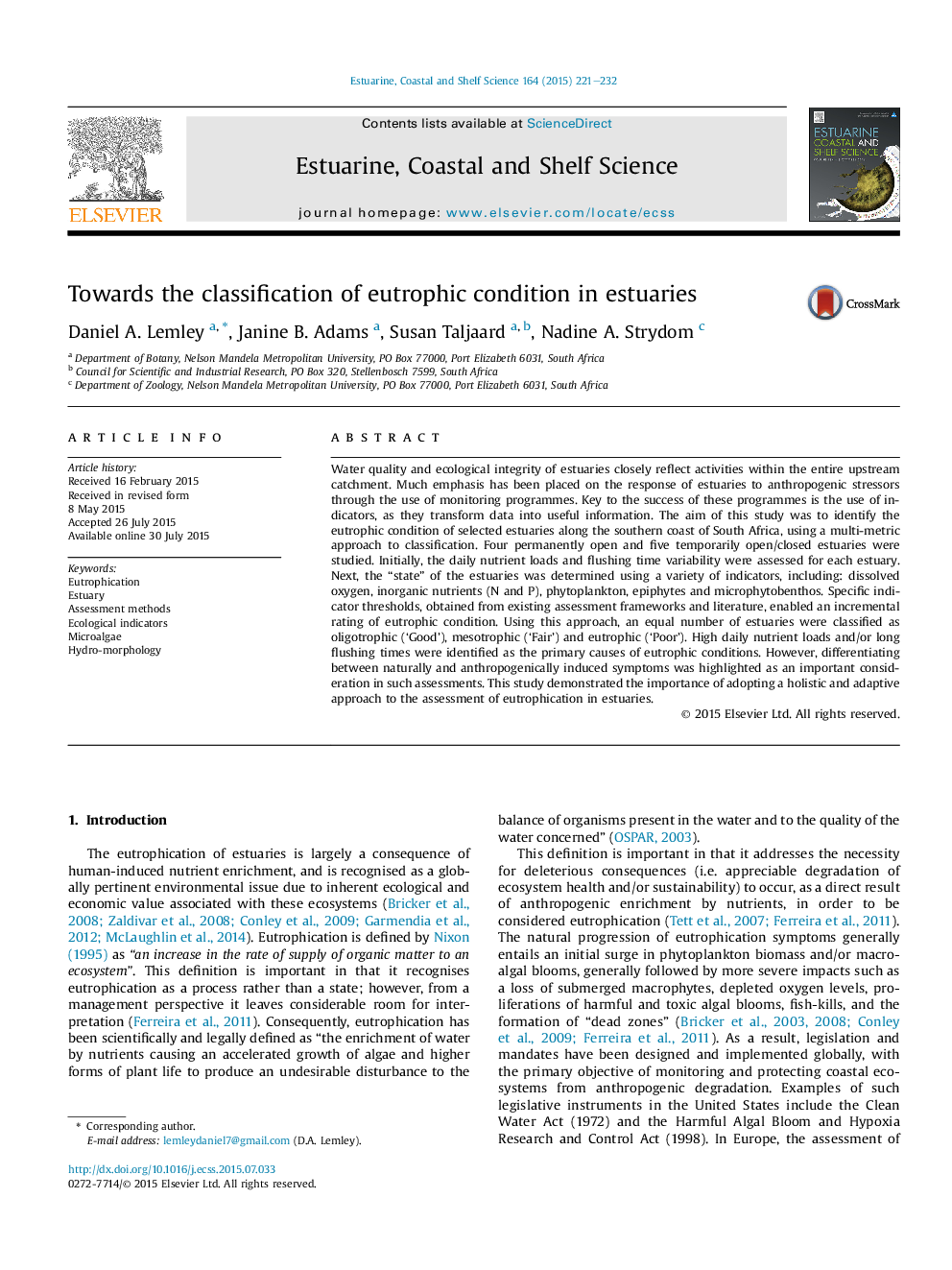| Article ID | Journal | Published Year | Pages | File Type |
|---|---|---|---|---|
| 6384702 | Estuarine, Coastal and Shelf Science | 2015 | 12 Pages |
Water quality and ecological integrity of estuaries closely reflect activities within the entire upstream catchment. Much emphasis has been placed on the response of estuaries to anthropogenic stressors through the use of monitoring programmes. Key to the success of these programmes is the use of indicators, as they transform data into useful information. The aim of this study was to identify the eutrophic condition of selected estuaries along the southern coast of South Africa, using a multi-metric approach to classification. Four permanently open and five temporarily open/closed estuaries were studied. Initially, the daily nutrient loads and flushing time variability were assessed for each estuary. Next, the “state” of the estuaries was determined using a variety of indicators, including: dissolved oxygen, inorganic nutrients (N and P), phytoplankton, epiphytes and microphytobenthos. Specific indicator thresholds, obtained from existing assessment frameworks and literature, enabled an incremental rating of eutrophic condition. Using this approach, an equal number of estuaries were classified as oligotrophic ('Good'), mesotrophic ('Fair') and eutrophic ('Poor'). High daily nutrient loads and/or long flushing times were identified as the primary causes of eutrophic conditions. However, differentiating between naturally and anthropogenically induced symptoms was highlighted as an important consideration in such assessments. This study demonstrated the importance of adopting a holistic and adaptive approach to the assessment of eutrophication in estuaries.
